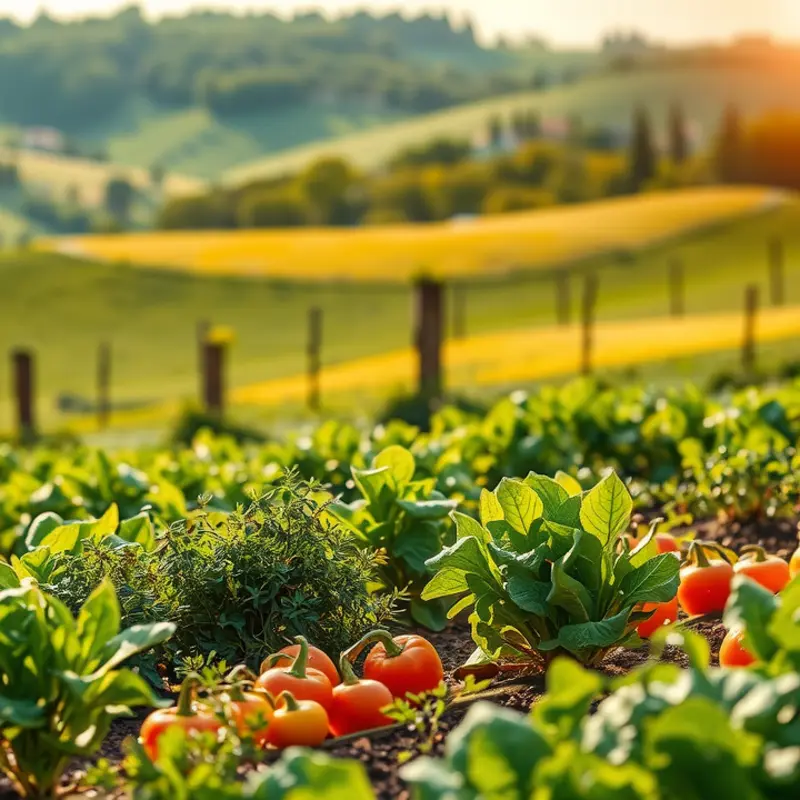Knowing how to handle food safely is crucial for maintaining health and reducing waste. Proper food handling practices can prevent foodborne illnesses and allow for efficient use of ingredients. This guide will cover the basics of food safety, focusing on safe storage methods, food management strategies, and tips to minimize waste in your kitchen.
Storage Strategies for Safe Food Handling

Proper food storage is vital for maintaining freshness and preventing foodborne illnesses. Understanding the ideal conditions for each food type helps optimize their longevity and safety. A core principle is maintaining the correct temperature. The refrigerator should be set between 32°F and 40°F (0°C to 4°C) to slow bacterial growth. Freezers should be at 0°F (-18°C) or below to stop bacterial growth altogether.
Organizing your fridge effectively can also reduce spoilage. Keep raw meat, poultry, and seafood on the bottom shelf to prevent their juices from dripping onto other foods, reducing the risk of cross-contamination. Store cooked foods and leftovers higher up, and use clear containers to see contents easily. This organization aids in reducing food waste, an important step in sustainable kitchen practices as covered in eco-smart kitchen storage.
It’s advisable to store fruits and vegetables in separate drawers due to the ethylene gas emitted by some fruits, which can speed up ripening and spoilage of nearby produce. Use perforated bags for items like herbs and leafy greens to maintain humidity while allowing some airflow.
Dairy products should be stored in the main compartment of the fridge rather than the door, where temperatures fluctuate more. Eggs also should not be kept in the door, despite many fridges having dedicated egg holders there.
For pantry items, keep them in a cool, dry place. Ideally, maintain a temperature below 70°F (21°C). Proper sealing can extend the shelf life of dry ingredients. Using airtight containers not only prevents spoilage but also deters pest infestations.
Labeling is key to effective management. Mark containers and packages with purchase or expiration dates to track what needs to be consumed first. Implementing a “first-in, first-out” system ensures efficiency and minimizes waste.
Darkness is another important factor, as the absence of light can preserve the integrity of some foods for extended periods, such as oils and fats that may become rancid when exposed to light.
Storing foods correctly is as much about keeping what you have fresh and safe as it is about keeping pests and contaminants away. By learning how various foods interact with temperature, light, air, and humidity, not only can you extend the life of your groceries, but you can also play a part in food sustainability efforts.
Minimizing Waste and Improving Food Management

Effectively managing your food supplies can significantly minimize waste and maximize freshness. From meal planning to portion control, every step you take aids in better food management, cost savings, and sustainability.
One of the simplest yet most powerful strategies is adopting the ‘first in, first out’ (FIFO) method. By organizing your refrigerator and pantry in this manner, you ensure that older items are used first, reducing the chance of forgetfulness and spoilage. Keep a watchful eye on expiration dates and rotate stocks, so fresh produce and perishable goods are always prioritized. For optimal results, label shelves and containers with purchase dates.
Another approach to controlling waste is meticulous meal planning. Crafting a weekly or monthly meal calendar based on what you already have can prevent unnecessary purchases. Opt for versatile ingredients that can be used across multiple dishes. This flexibility not only ensures variety in your dietary routine but also reduces the likelihood of items expiring before use. For inspiration on easy and resourceful recipes, explore ideas here.
Proper portioning is another crucial component in waste reduction. Understanding and predicting the correct portion sizes for your household can prevent leftovers. Utilize kitchen scales and measuring cups to ensure precision serving. If you do find yourself with excess, think creatively—leftovers don’t have to mean reheated meals. Transform yesterday’s dinner into today’s lunchtime delight. Incorporate these remnants into salads, omelets, or create flavorful wraps. The potential for new culinary experiences is boundless when you view leftovers as ingredients rather than waste.
Furthermore, consider adopting a batch cooking routine. This approach involves preparing large quantities of certain components or meals in advance, which can then be stored and used over several days. Batch cooking not only streamlines the cooking process but reduces the energy consumption associated with frequent kitchen use.
Lastly, embrace freezing as a safe, effective preservation method. Many perishable items, from sauce bases to chopped vegetables, freeze well and can dramatically extend their lifespan. However, remember to package foods properly to avoid freezer burn, ensuring the quality remains intact upon defrosting.
Incorporating these strategies into your daily routine won’t just refine your kitchen management skills. It will actively contribute to a more sustainable lifestyle, reducing both waste and grocery costs. With each small adjustment, you support a healthier planet and a more organized, efficient home.
Final words
Implementing safe food handling practices not only safeguards your health but also enhances the overall management of your kitchen. By understanding how to store food correctly, keep track of your inventory, and minimize waste, you ensure that your meals are both delicious and safe. Remember that small changes in your food handling methods can lead to big results in health and sustainability. Embrace these best practices to transform your kitchen into a safer and more efficient space.







